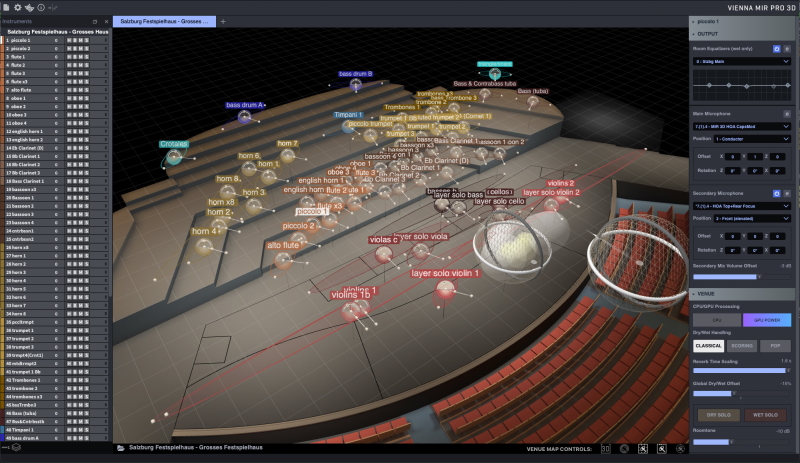VSL Vienna Power House
The Vienna Symphonic Library and GPU Audio announce the release of Vienna Power House, a groundbreaking add-on for Vienna MIR Pro 3D that offloads convolution processes to the graphics card in order to reduce the load on the CPU. Utilizing GPU Audio’s patented technology, this powerful acceleration component frees up the CPU for other tasks by using the vast processing capabilities of the more adaptable and streamlined GPU.
Vienna Power House is currently available at an introductory price of €145 (reg. €165). To celebrate the release, all Vienna MIR products are available at major discounts through November 30, 2023. Free demo versions of all products are availble for testing.
Vienna Power House currently works in connection with VSL’s unique mixing platform, Vienna MIR Pro 3D and Vienna MIR Pro 3D (24). MIR’s core engine relies on convolution for placement and reverberation. This mathematical process taxes the CPU in a linear way. More audio sources, more output channels (from stereo to immersive formats), and long reverb tails may result in hundreds, even thousands of convolutions, calculated in real-time at a preferably low latency. By lowering the CPU load by up to 50% or more, depending on the user’s computer specifications and the project at hand, Vienna Power House provides significantly increased raw computation power at the click of a button. Vienna Power House supports M1/M2 processors on the Mac, and NVIDIA and AMD graphics cards on the Windows side. In its next iteration, users will also be able to outsource the convolution processes of the Vienna Synchron Player to the GPU.
GPU Audio’s CBO Jonathan Rowden explains: “As a composer myself, the name VSL has always met my ears with a certain reverence – from film and game composers that wanted to bring the absolute peak of quality to their final deliveries. Further enabling the VSL platform to elevate users' musical creativity and results, via acceleration on GPUs, is a natural fit for the technology and a personally fulfilling one for me.”
Vienna Symphonic Library’s CEO, Herb Tucmandl, adds: “We’re thrilled to be partnering with GPU Audio to provide our users with significantly accelerated convolution performance. Vienna MIR Pro 3D calculates thousands of convolutions in real-time, which can be quite taxing on the CPU. Offloading this task to the Graphics Processing Unit will make a huge difference for anyone who’s working on large orchestral or other projects.”
Vienna MIR Pro 3D is a holistic mixing and reverberation application based on Vienna’s groundbreaking Multi Impulse Response Convolution technology. Not just virtual instruments, but any audio signal can be authentically placed in a “multi-sampled” room using the unique MIR Icon, making it exceptionally easy for the user to combine all aspects of placement and reverberation into a single intuitive workflow.
As opposed to traditional mixing, where countless parameters create a barrier between the music creator and the desired outcome, Vienna MIR Pro 3D offers an entirely new spatial concept, allowing the user to interact with the players more like a conductor than an engineer. Instead of using two-dimensional faders, pan pots, pre-delays, and a host of other inconveniences to achieve clarity and depth in a mix, the MIR Control Icon lets users easily place any audio signal in a three-dimensional room and control almost any sonic aspect quickly and intuitively. Parameters such as volume, stereo width, 3D direction and dry/wet signal ratio can be accessed directly in the MIR Icon.
With the new update released today, Vienna MIR Pro 3D comes with hundreds of new factory presets for the ideal placement of instruments in all available venues as well as new output settings, covering all stereo, surround and immersive formats (e.g., 5.1, 7.1. 5.1.4, 7.1.4, 7.1.6, 9.1.4, 9.1.6, Auro 3D 10.1, and many more).
 How to resolve AdBlock issue?
How to resolve AdBlock issue? 